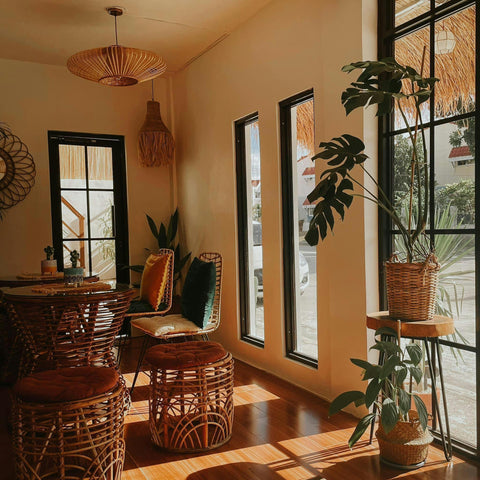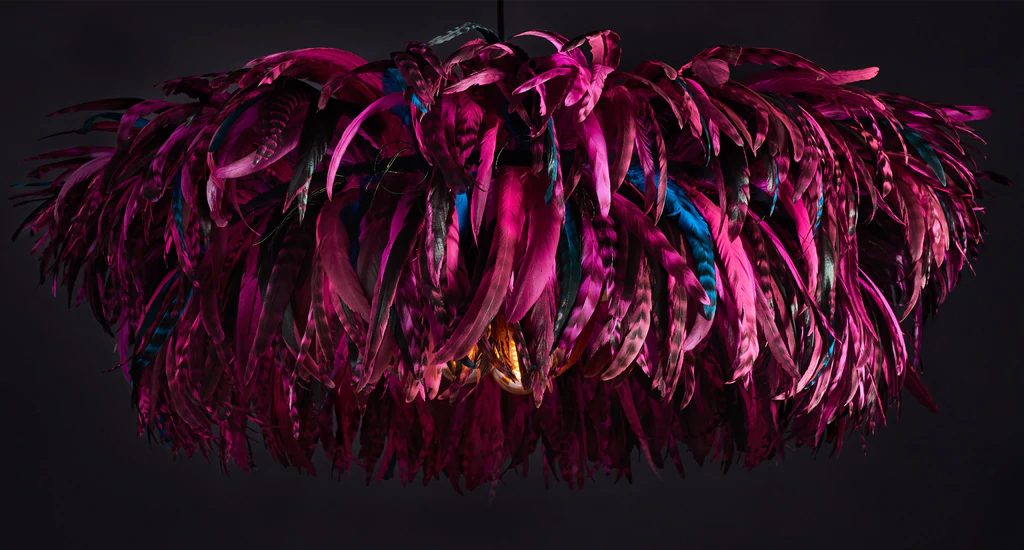
10 Tips for Sustainable Interior Design
Sustainable interior design is more than a trend. It's a commitment to reducing our environmental footprint while creating beautiful, healthy spaces. This approach involves thoughtful selection of materials, energy-efficient lighting, and eco-friendly furniture. It's about making choices that are good for you and the planet.
In this article, we'll share ten tips to help you embrace sustainable interior design. From upcycled decor to biophilic design elements, these strategies can transform your space. Whether you're a homeowner, an interior designer, or simply eco-conscious, these tips will help your sustainable interior design.
Understanding Sustainable Interior Design

By adopting sustainable interior design, you can create a home that is stylish and better to the planet.
The Environmental Impact of Your Design Choices
Every design choice we make has an environmental impact. From the materials we choose to the energy we consume, our decisions matter. For instance, selecting furniture made from responsibly sourced wood can help conserve forests. Opting for energy-efficient lighting can reduce your carbon footprint.
By making conscious, informed choices, we can minimise the environmental impact of our interior design. It's a powerful way to contribute to sustainability while creating spaces we love.
1. Selecting Sustainable Materials

Photo by Pixabay
Choosing sustainable materials is a key aspect of green interior design. These materials are either renewable, recycled, or have a low environmental impact. Some popular sustainable materials include bamboo, cork, and reclaimed wood. These materials are not only eco-friendly but also durable and aesthetically pleasing.
- Bamboo grows quickly, making it a renewable resource.
- Cork comes from trees without harming them, making it a sustainable choice.
- Reclaimed wood reduces the need for new timber, helping to conserve forests.
- Feathers, using the by-product of the poultry industry, are more sustainable than synthetic alternatives.
Why Bamboo, Cork, and Reclaimed Wood Matter
Bamboo, cork, and reclaimed wood are excellent choices for sustainable interior design. They offer unique textures and patterns, adding character to your space. Moreover, these materials are durable and long-lasting. This means less frequent replacements, reducing waste and saving resources.
By choosing these sustainable materials, you can create a stylish interior while minimising your environmental impact. It's a win-win for you and the planet.
Using Feathers
Our feather lampshades are by-products of the poultry industry. View our feather gallery to understand more about the use and types of feathers we use.
2. Investing in Eco-Friendly Furniture

Eco-friendly furniture is another cornerstone of sustainable interior design. This type of furniture comes from recycled or responsibly sourced materials.
By investing in eco-friendly furniture, you're supporting businesses that prioritise sustainability. This can help drive the demand for green products, encouraging more companies to adopt sustainable practices.
The Benefits of Recycled and Responsibly Sourced Materials
Furniture made from recycled materials helps reduce waste. It gives a second life to materials that would otherwise end up in a landfill. Responsibly sourced materials, on the other hand, ensure that the production process is sustainable. This can involve using renewable resources, minimising pollution, or providing fair wages to workers.
By choosing furniture made from recycled or responsibly sourced materials, you're not just creating a beautiful interior. You're also making a positive impact on the environment and society.
3. Embracing Energy-Efficient Lighting

Lighting plays a crucial role in any interior design. But it's not just about aesthetics. The type of lighting you choose can significantly impact your energy consumption.
Energy-efficient lighting, such as LED bulbs, consume less electricity than traditional incandescent bulbs. This can lead to substantial savings on your energy bills over time.
How Lighting Choices Affect Energy Consumption
Every light bulb you use contributes to your home's overall energy consumption. Traditional incandescent bulbs are notorious energy guzzlers, converting only about 10% of the energy they consume into light.
On the other hand, LED bulbs are much more efficient. They convert nearly 95% of the energy they consume into light, wasting very little as heat. By simply switching to energy-efficient lighting, you can significantly reduce your home's energy consumption. This is a simple yet effective step towards a more sustainable interior design.
4. Choosing Low-VOC Paints for Better Air Quality

When it comes to painting your walls, the choice of paint can have a significant impact on your indoor air quality. Many conventional paints contain high levels of volatile organic compounds (VOCs).
These VOCs can off-gas into your home for years after application, contributing to poor indoor air quality. By choosing low-VOC or no-VOC paints, you can ensure a healthier and more sustainable interior environment.
View our previous article on choosing the colours for your room.
The Health Advantages of Non-toxic Materials
Exposure to high levels of VOCs can lead to a range of health issues. These include headaches, respiratory problems, and even certain types of cancer.
Low-VOC paints, on the other hand, significantly reduce these risks. They also contribute to a healthier indoor environment by reducing indoor air pollution.
In addition to paints, consider other low-VOC materials for your interior design. These include adhesives, sealants, and finishes. By doing so, you can further enhance the sustainability and healthiness of your living space.
5. Upcycling Decor for Unique and Waste-Free Interiors

Upcycling is a creative and sustainable way to decorate your interiors. It involves transforming old or discarded items into new, functional pieces. This practice not only reduces waste but also adds a unique character to your space. Each upcycled piece carries a story, making your interior design more personal and meaningful.
The Charm and Environmental Benefit of Upcycled Pieces
Upcycled decor pieces are not just charming, they're also eco-friendly. By giving a second life to old items, you're reducing the demand for new products. This means we use fewer resources and generate less waste. It's a win-win for both your home and the environment.
So next time you're thinking of throwing something away, consider if it could be upcycled. You might just create a one-of-a-kind decor piece that's both beautiful and sustainable. For example, our feather light shades use upcycled bicycle wheels to make a strong and durable supporting structure.
6. Incorporating Biophilic Design Elements

Photo by Staiffy Joy
Biophilic design is a concept that seeks to connect our living spaces with nature. It's about creating a sense of outdoors, indoors. This can be achieved through the use of natural materials, colours, and patterns. It can also involve incorporating actual elements of nature, like plants, water features, or natural light.
View our article on Biophilic design here.
Connecting with Nature Indoors
Bringing nature indoors has multiple benefits. It can improve air quality, increase our connection with the natural world, and even boost our mood and productivity. Consider adding indoor plants, using natural materials like wood or feathers, or maximising natural light. Even a simple colour palette inspired by nature can create a calming, biophilic effect.
Remember, sustainable interior design is not just about being kind to the environment. It's also about creating spaces that are kind to us, promoting health and well-being.
7. Opting for Eco-Friendly Textiles

The textiles you choose can have a significant impact on the sustainability of your interior design. Many conventional fabrics use harmful chemicals and large amounts of water. Opt for eco-friendly alternatives like organic cotton, linen, feathers or hemp. These materials are grown naturally typically without pesticides and require less water than conventional cotton.
Organic Cotton, Linen, and Hemp: Sustainable Choices for Fabrics
Organic cotton, linen and hemp are not only sustainable but also durable and comfortable. Choosing eco-friendly textiles is a simple way to make your interior design more sustainable. It's a change that's good for the planet and good for your home.
8. Using Renewable Energy Resources
Renewable energy resources are a key component of sustainable interior design. They can significantly reduce your home's carbon footprint. Consider installing solar panels or using green energy providers. These options can power your home with clean, renewable energy.
The Role of Solar Energy in Sustainable Design
Solar energy is a powerful tool in sustainable design. It can provide electricity for your home, reducing reliance on fossil fuels. You can cleverly integrate solar panels into your design to add both function and aesthetic appeal. They're a long-term investment that can save money and protect the environment.
Incorporating renewable energy into your interior design is a bold step towards sustainability. It's a choice that benefits both your home and the planet.
9. Implementing Zero-Waste Design Strategies

Zero-waste design strategies are a cornerstone of sustainable interior design. They aim to minimise waste and maximise the use of resources. You can do this by repurposing existing furniture, using reclaimed materials, and avoiding disposable items. It's about making conscious choices that reduce waste.
Reducing, Reusing, and Recycling in Interior Design
Reducing, reusing, and recycling are key principles in sustainable design. They help to minimise waste and make the most of resources. For example, you can reduce waste by choosing durable, high-quality furniture. You can reuse items by repurposing them or giving them a new life.
Recycling is also crucial. Reusing previously processed products for new purposes within your design. By following these principles, you can create a beautiful, sustainable interior.
10. Sourcing Locally & Quality to Reduce Carbon Footprint
Choosing good quality local materials and products is a great way to support sustainable interior design. It helps to reduce the carbon footprint associated with transporting goods and the product lasting longer. Moreover, local sourcing supports local businesses and economies. It also ensures a unique and authentic design that reflects the local culture and environment.
The Importance of Local Sourcing and Community Engagement
Local sourcing is not just about reducing carbon emissions. It's also about building a sense of community and supporting local artisans and businesses. By choosing local products, you're investing in your community. You're also promoting sustainability at a local level.
In conclusion, local sourcing is a key aspect of sustainable interior design. It's about creating interiors that are not only beautiful but also socially and environmentally responsible.
Buy Well, Buy Once
Investing in good quality products not only means you have a nicer product, it also means it will last longer. The saying Buy Well, Buy Once saves you money and reduces the impact on the environment. Linking this with locally sourced products is a win win for your carbon footprint. i
Conclusion: Balancing Aesthetics and Sustainability
Sustainable interior design is about more than just aesthetics. It's about creating spaces that are not only beautiful but also kind to our planet.
By following these tips, you can create a home that is stylish, comfortable, and sustainable. Remember, every small change can make a big difference in our collective effort to protect the environment.




